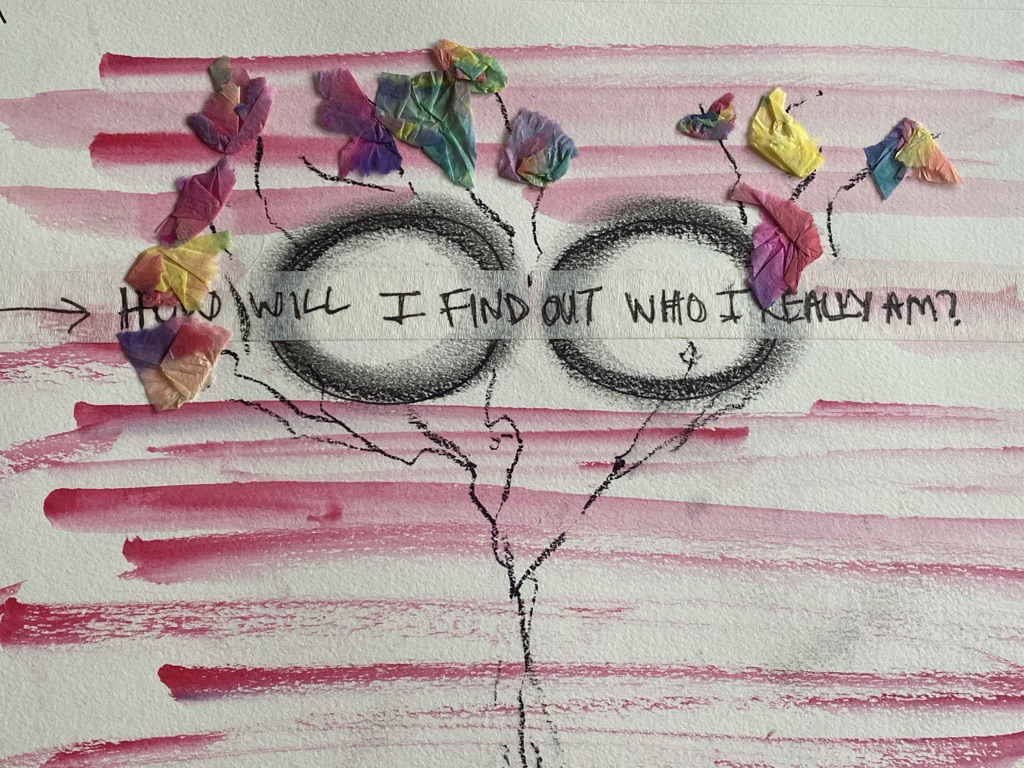It was my personal journey through healing my own Complex Trauma that led me to the incredible work I do today. It is such an honour for me to provide therapy to many Muslim women around the world who have experienced trauma. I’m passionate about continuing this work to develop an even deeper understanding and appreciation for how Islamic psychology in combination with Expressive Arts Therapy and other therapeutic modalities can be used to help trauma survivors engage with and work through their difficult stories so that those very stories no longer define them or determine the outcomes of their lives. Ya Rabb!
As we dive into this discussion around trauma healing, I feel it’s important to define trauma so that we have a frame of reference to begin with when we start exploring this work. It seems like “trauma” has become a part of our everyday language now and is often used quite lightly. You might hear someone saying things like, “that conversation with my boss was so traumatizing”, or “that movie was really traumatic.” I’ve even seen someone refer to their bad hair day as “hair trauma”. Unfortunately, such casual usage of the term diminishes the gravity of its true meaning.
During my training to become a therapist, I remember coming across the following elaboration on what trauma is: “To define all adversities as traumas is like seeing all collisions as smashes. People collide with misfortune all the time—sometimes it smashes them, but often they merely make contact.” Dr. Bessel Van Der Kolk, an American Psychiatrist who is a leader in studying and treating trauma, often speaks about how an event could cause an individual to experience trauma and yet if another person experienced the exact same thing, it might not be traumatic for them at all. So because we hear the term being used in so many different contexts, I personally find it super helpful to check in from time to time on where my own understanding lies. The definition I use when providing psychoeducation and when working with clients is from van der Kolk; he says that “trauma is something that overwhelms one’s coping capacities.”
Van der Kolk defines trauma as an injury. In fact, the word trauma comes from the Greek root that means “wound”. When you think of an injury, you don’t usually think of something that’s permanent, which is so interesting because many of the clients I’ve worked with have felt like they’re never going to “get back to their old selves”, or they believe they’re never going to be able to cope or function again. For most, this simply isn’t true.
When someone experiences a stressful event in their life, it can be traumatic. A trauma is almost always the result of an event or an experience that causes an overwhelming amount of stress that exceeds one’s ability to cope or be with the emotions involved with that particular experience. It does not mean that the person is broken. It doesn’t mean they will function at a less than ideal level forever. It means that something beyond their capacity happened to them and as a result they disconnected from themselves, often as a way to protect themselves.
So, the healing process really begins with reconnection. And, in order for reconnection to begin, we have to feel safe enough. How do we start establishing safety? By coming back into our bodies; what I like to call “coming home to ourselves.” We then begin exploring through our five senses and start noticing. We notice what’s happening in our bodies. Perhaps there’s tension, constriction, a heaviness. We notice the sensations we feel, the thoughts that sweep in. We notice any discomfort or judgement that may arrive. Noticing is about approaching ourselves with compassion and curiosity. And as we notice we often begin to feel safe enough to express through our bodies, through movement, through the arts. It is this uninhibited self-expression that starts to spark a sense of aliveness. And it is that aliveness that reconnects us to ourselves; not necessarily as we were before the trauma, but as the most authentic versions of ourselves as we are today.
